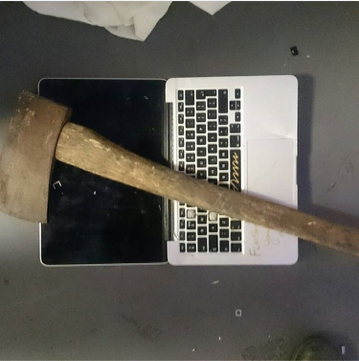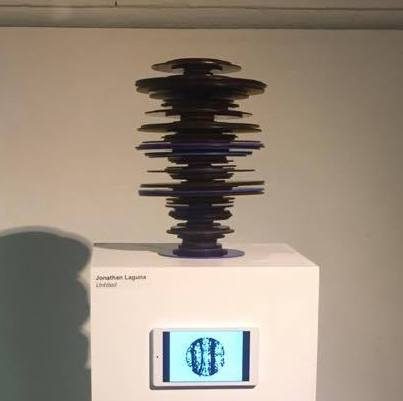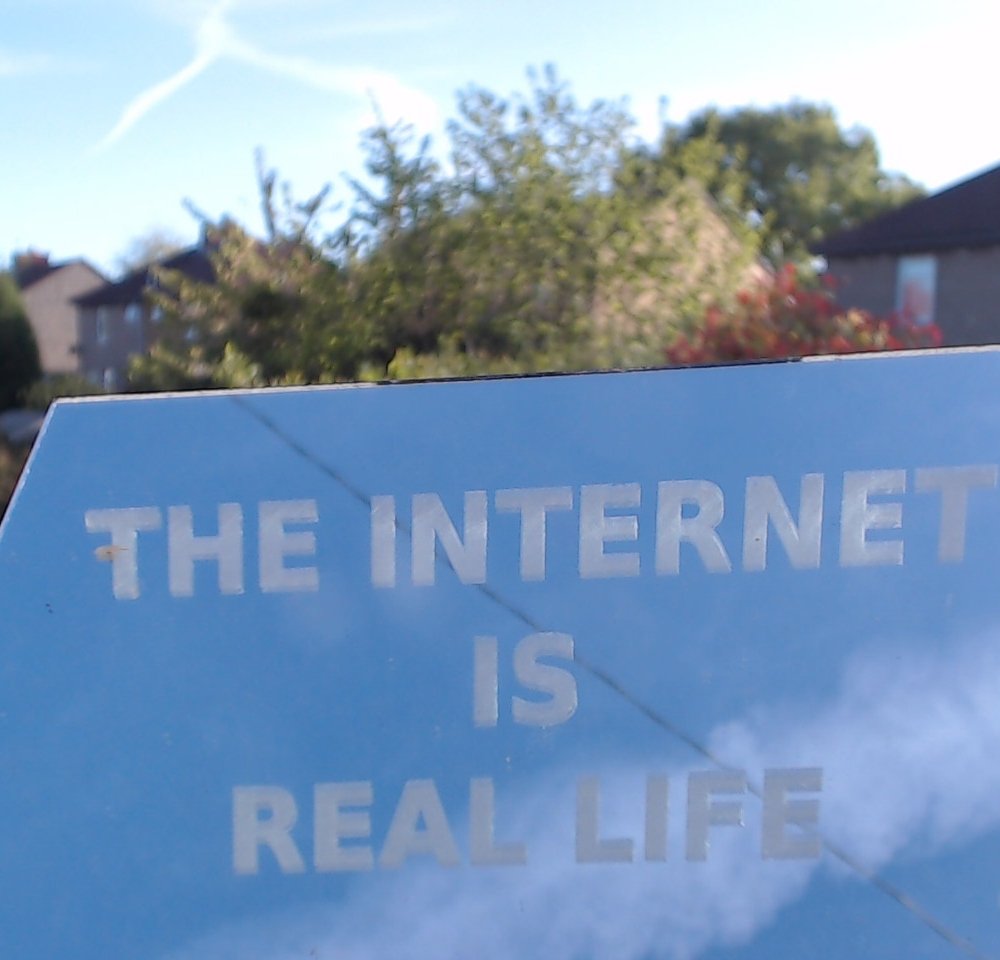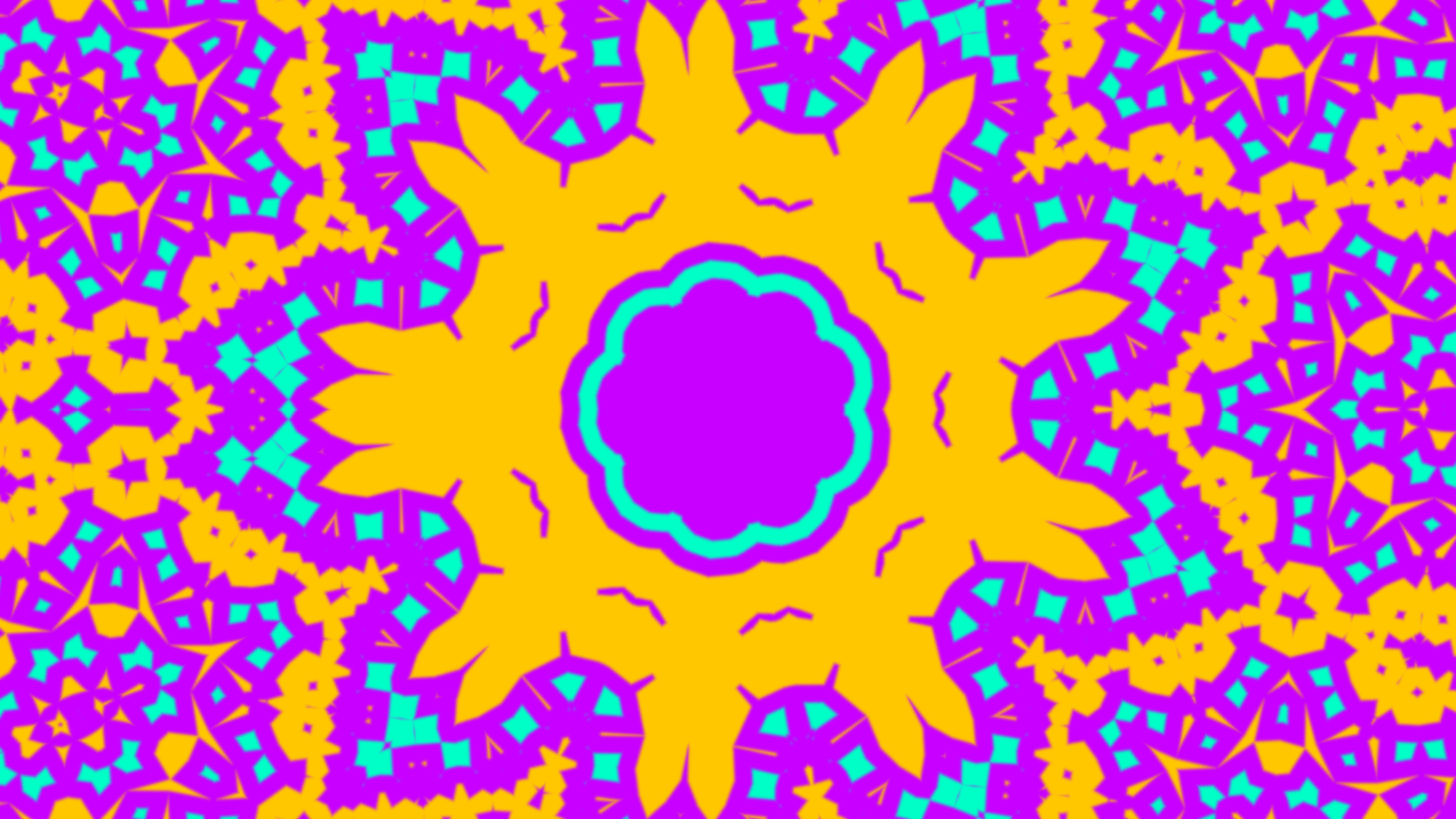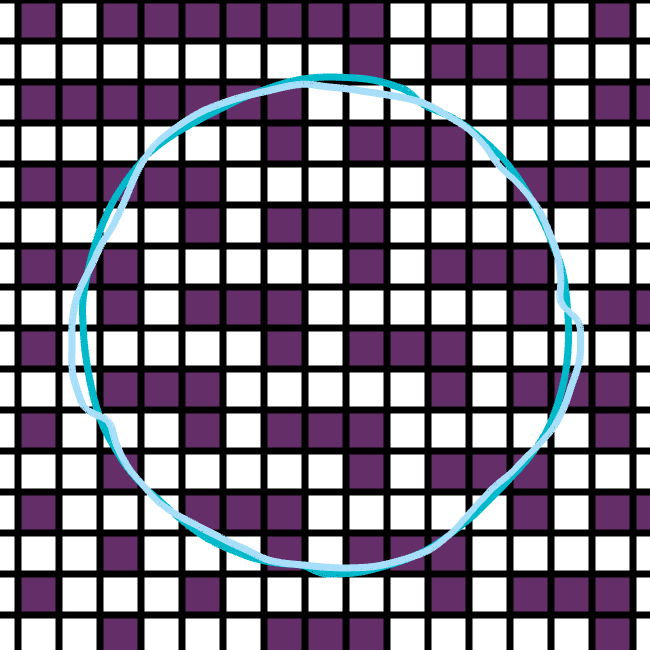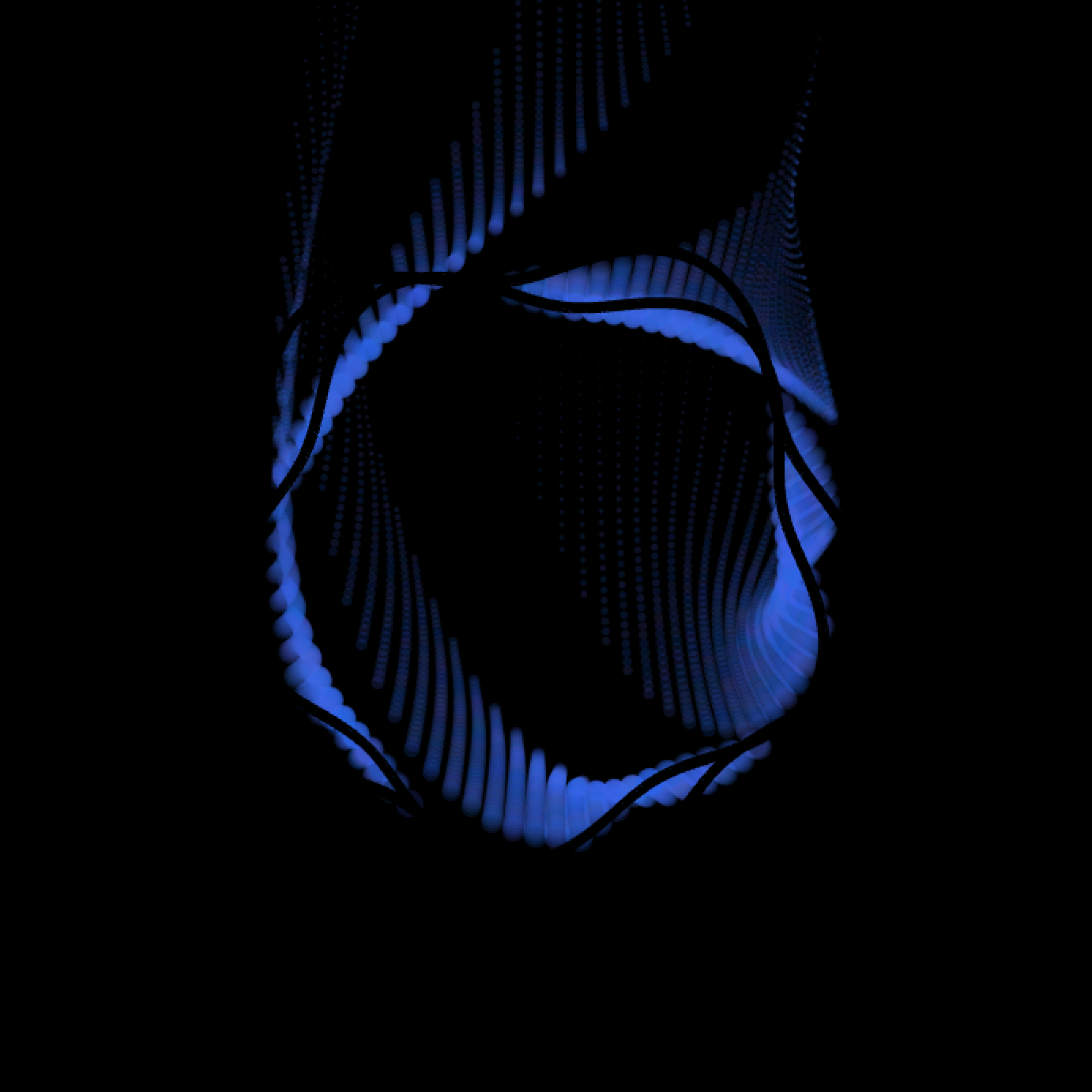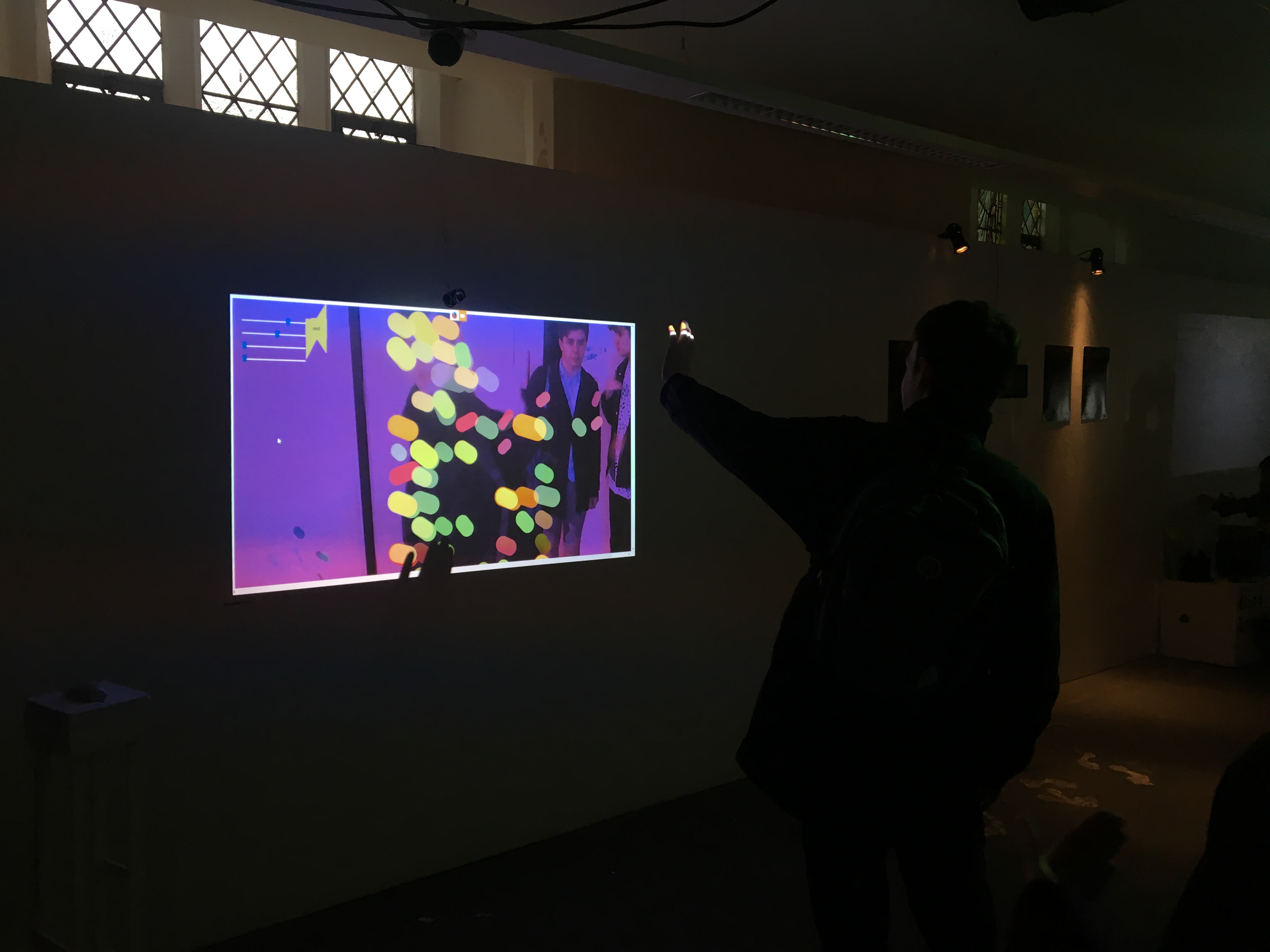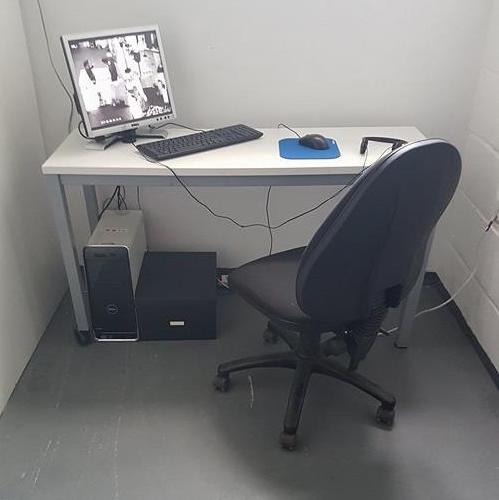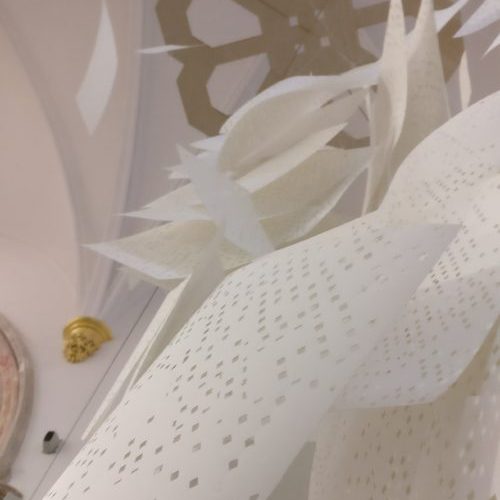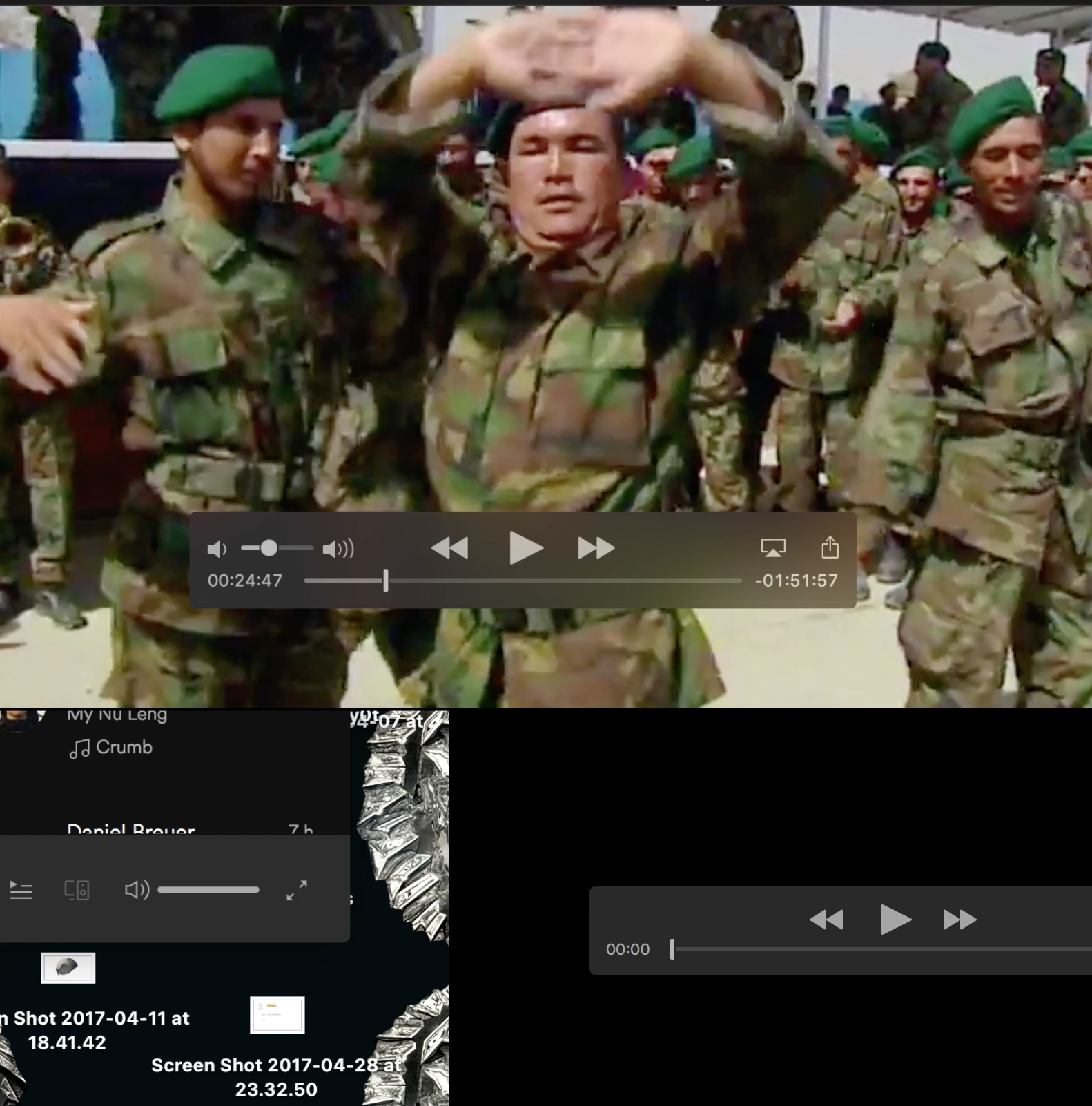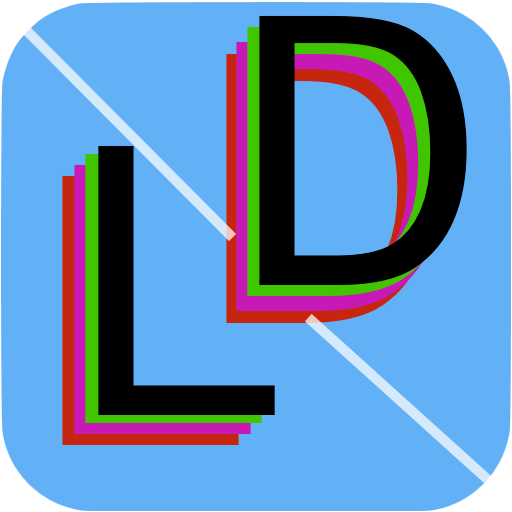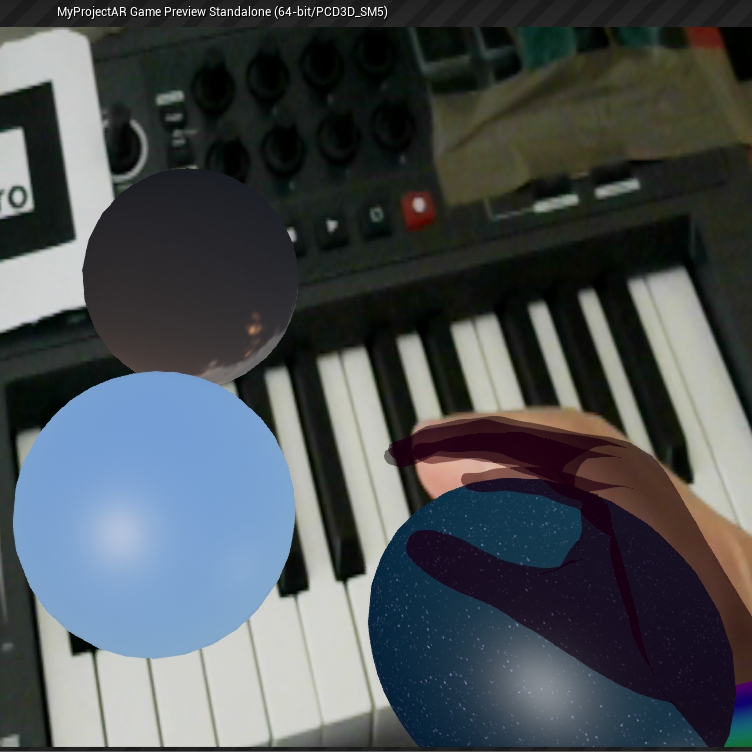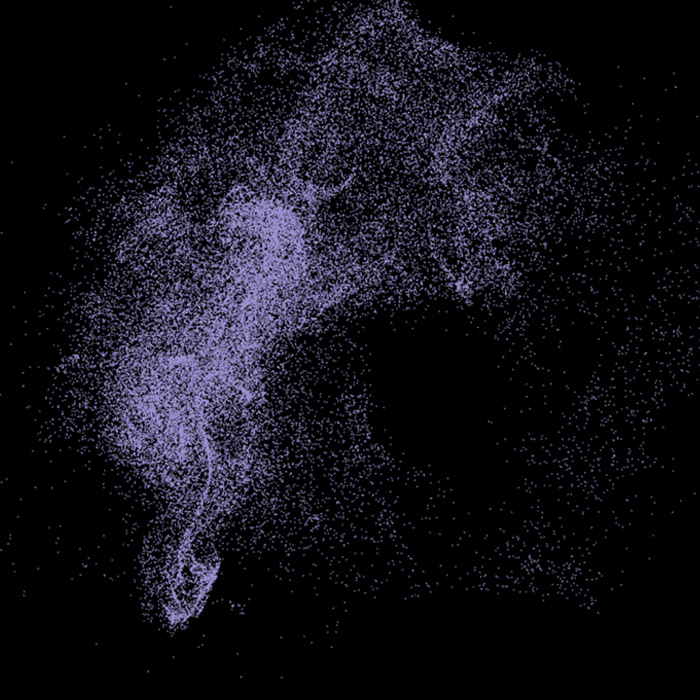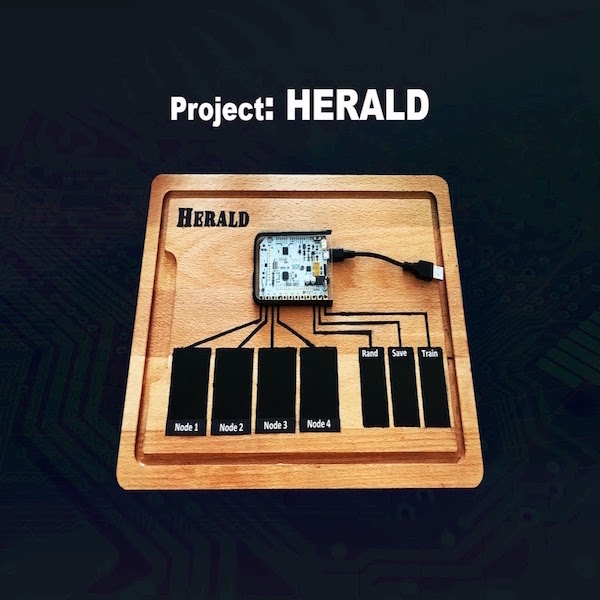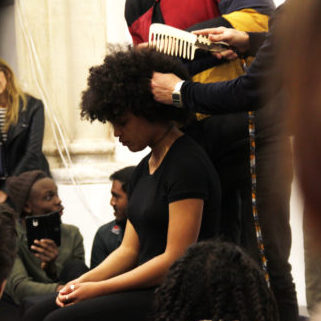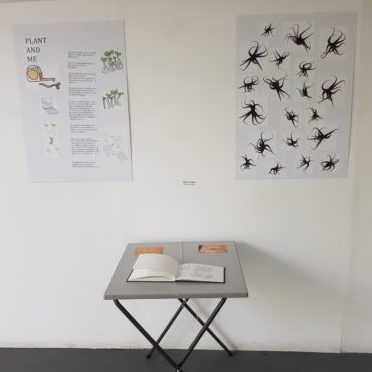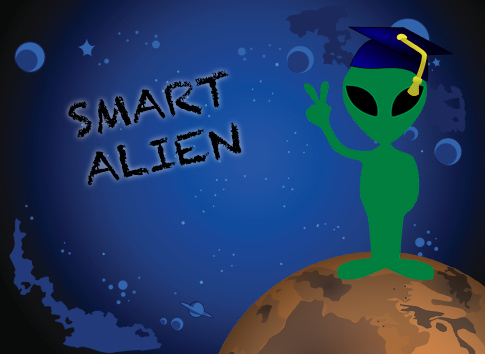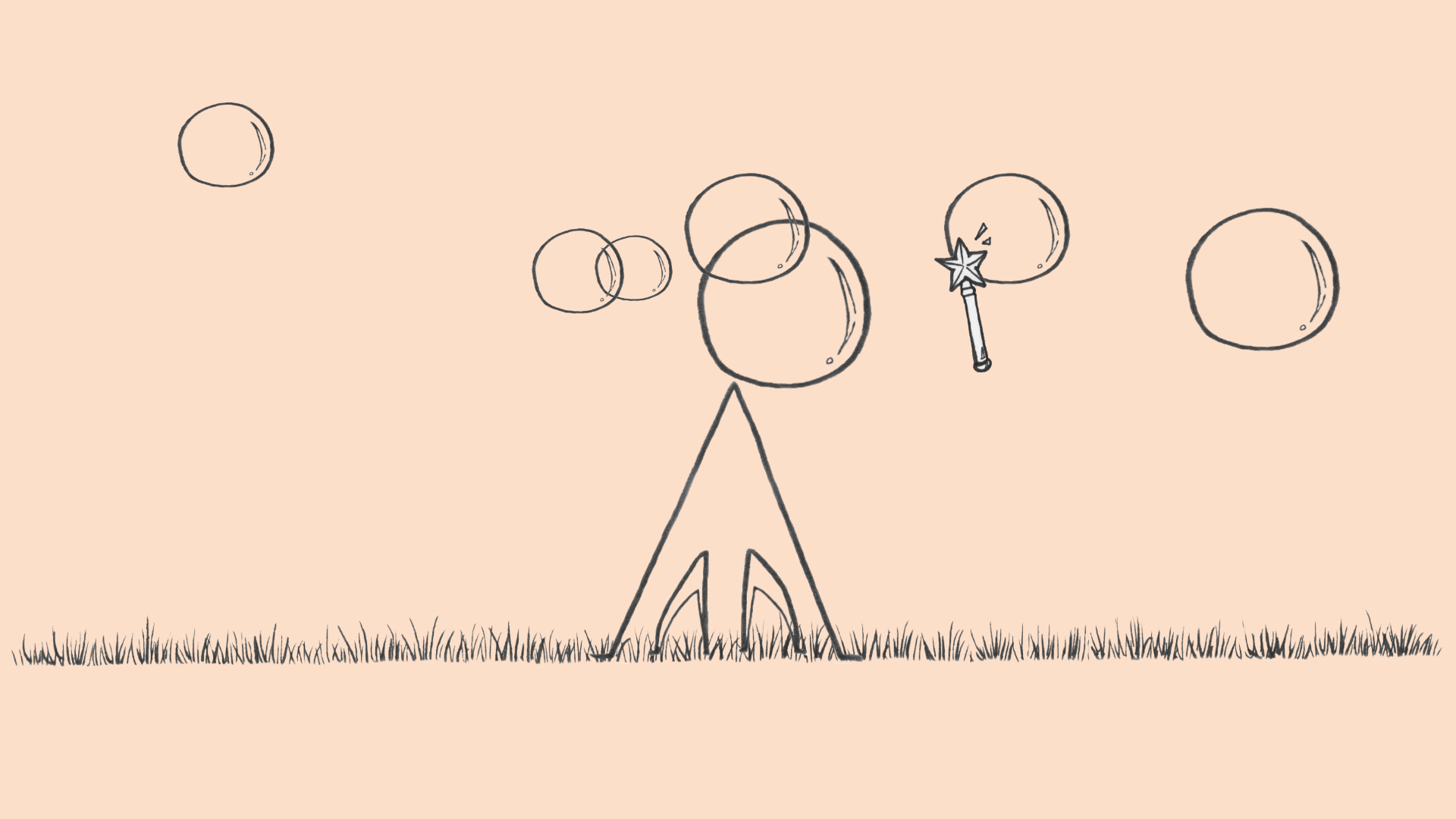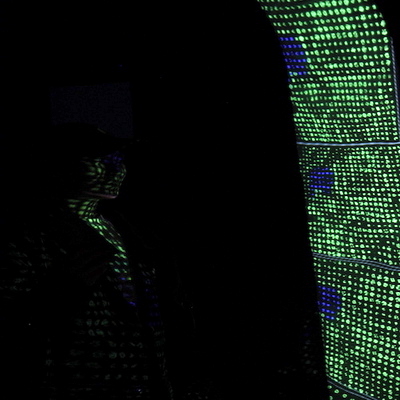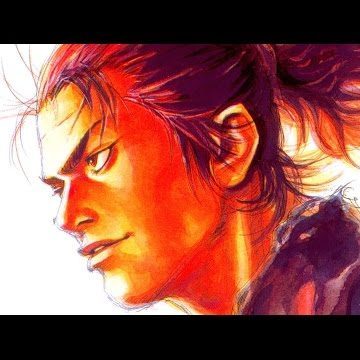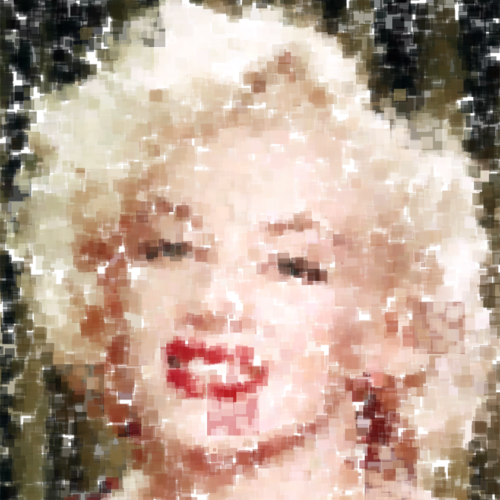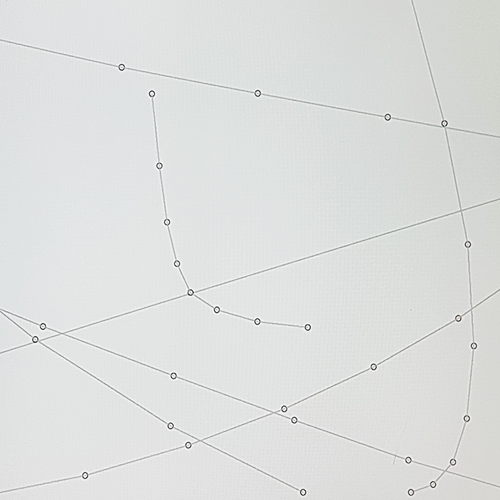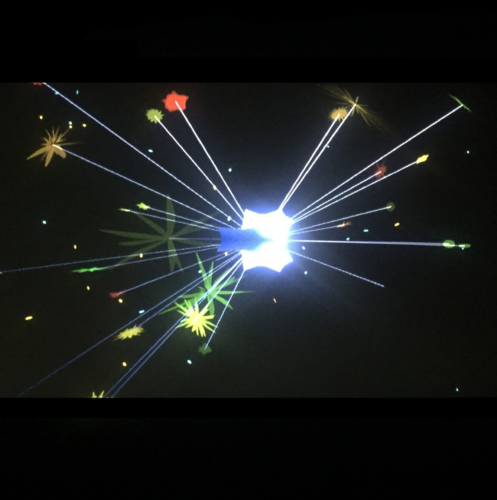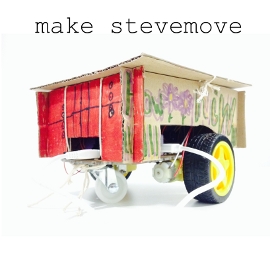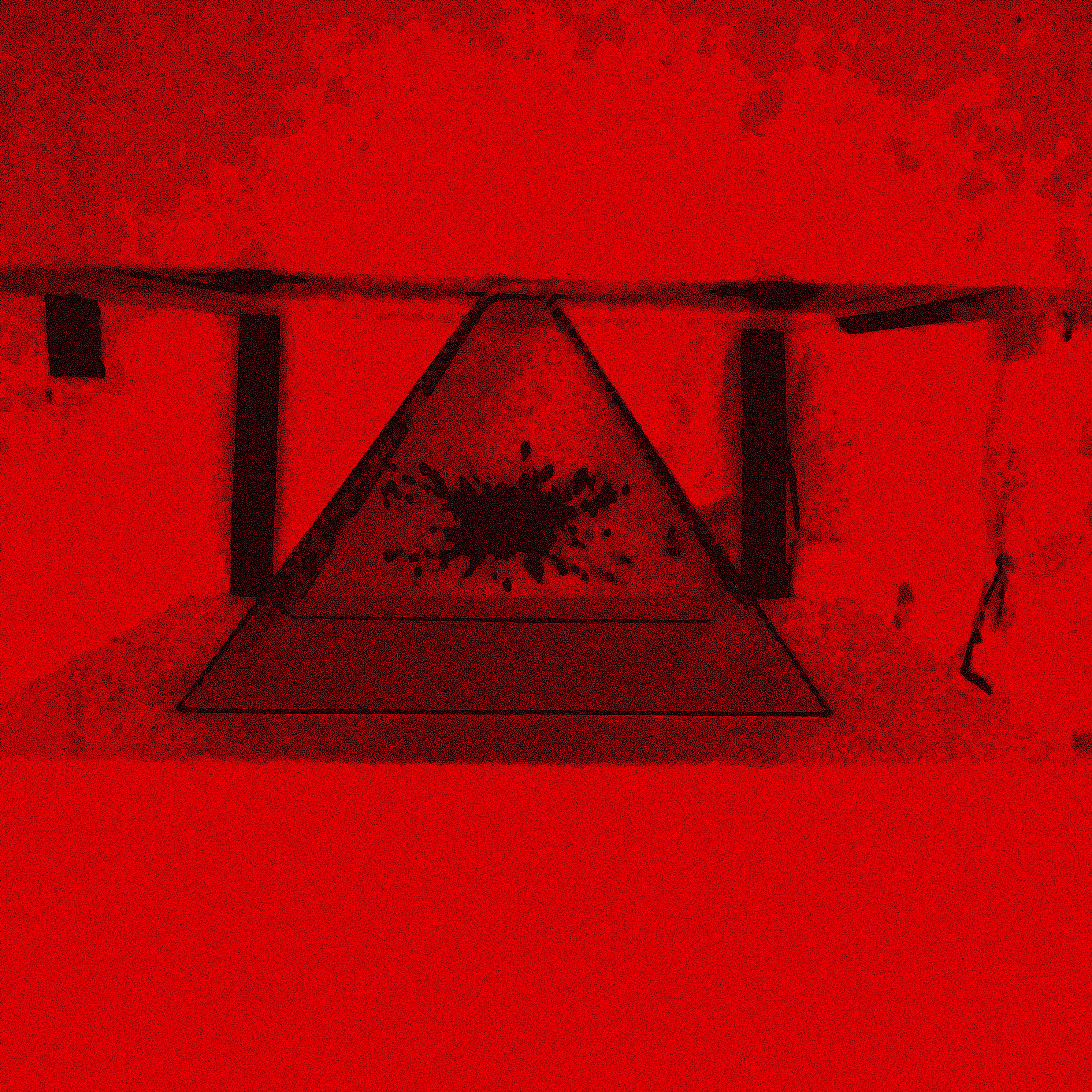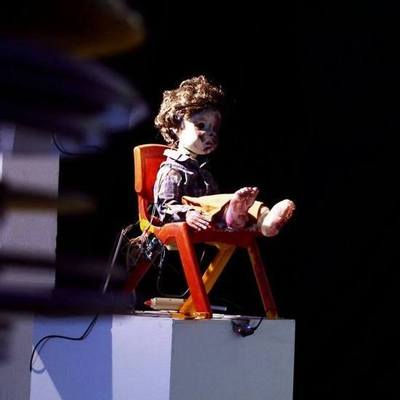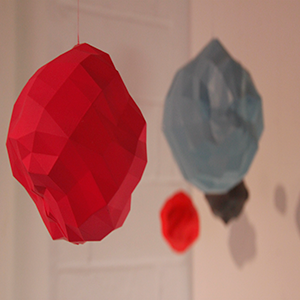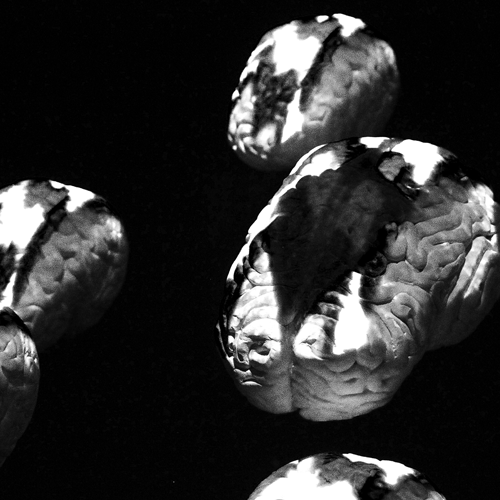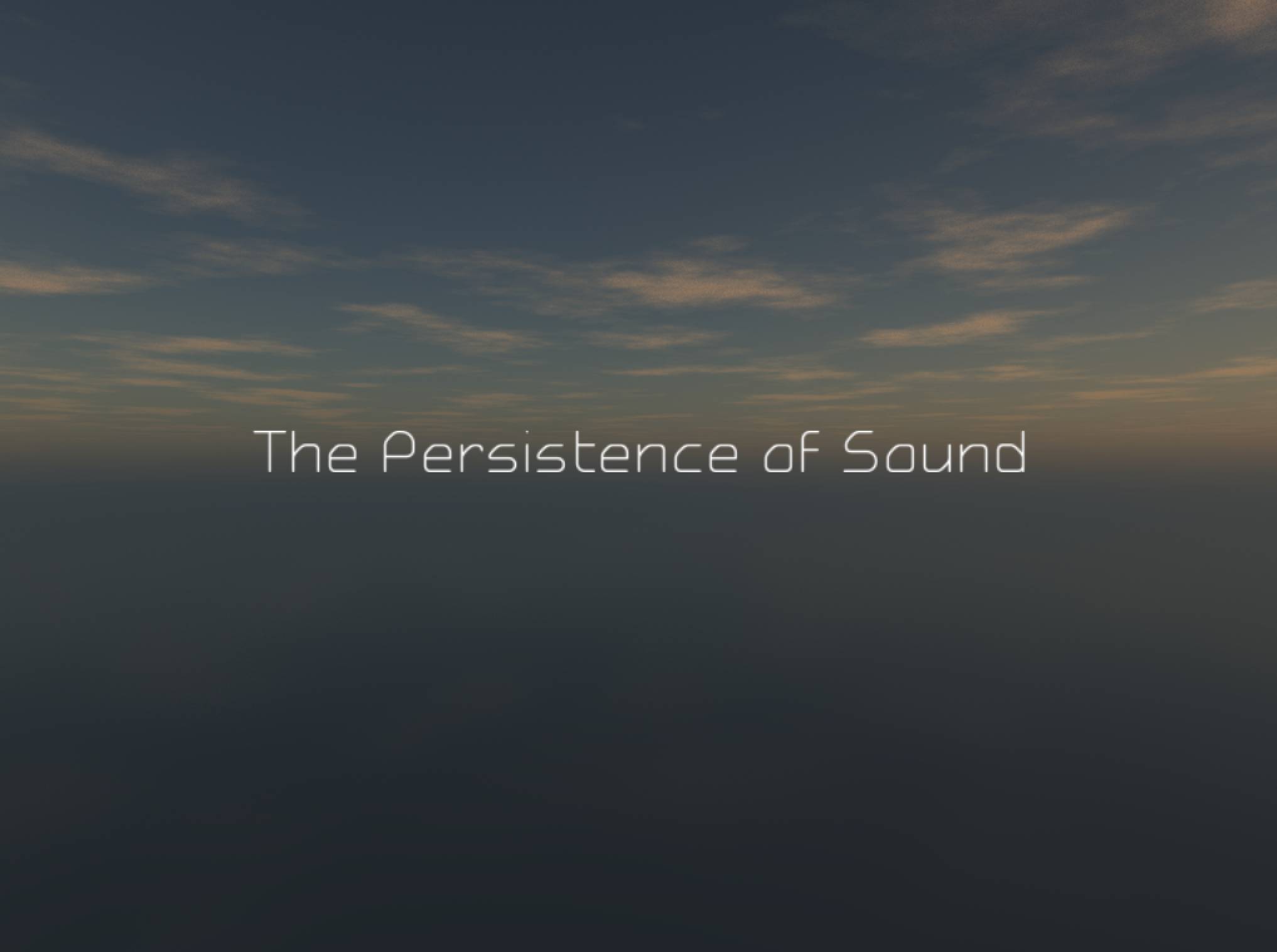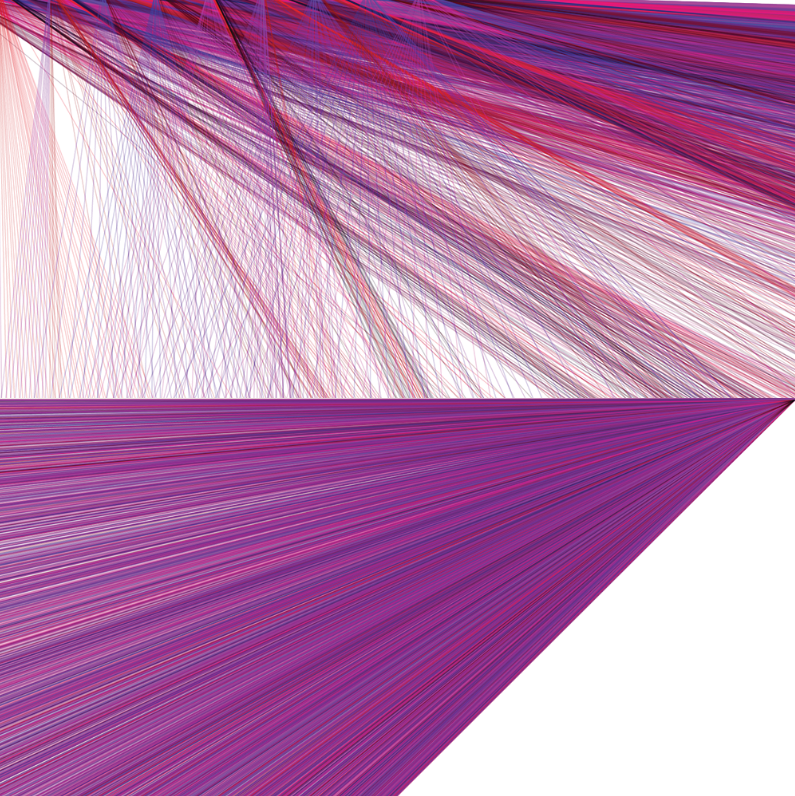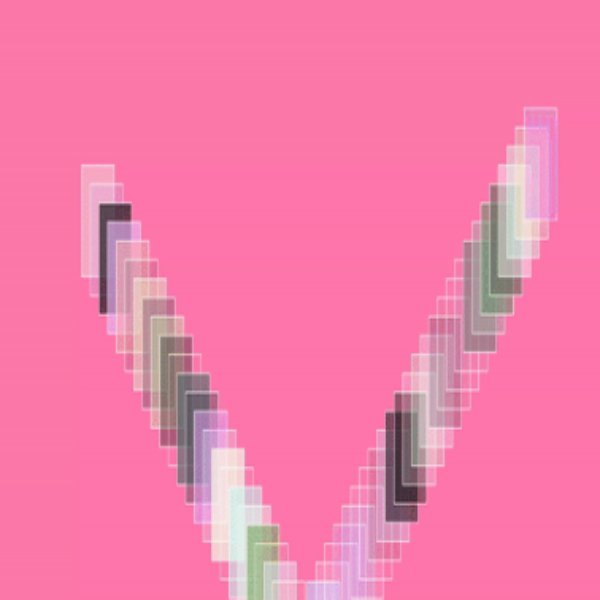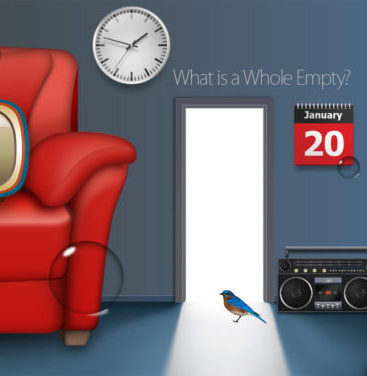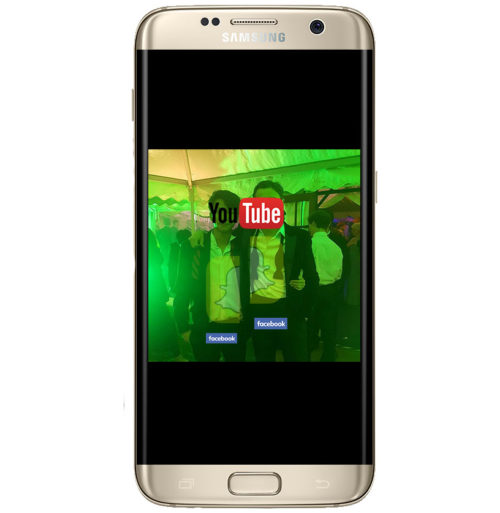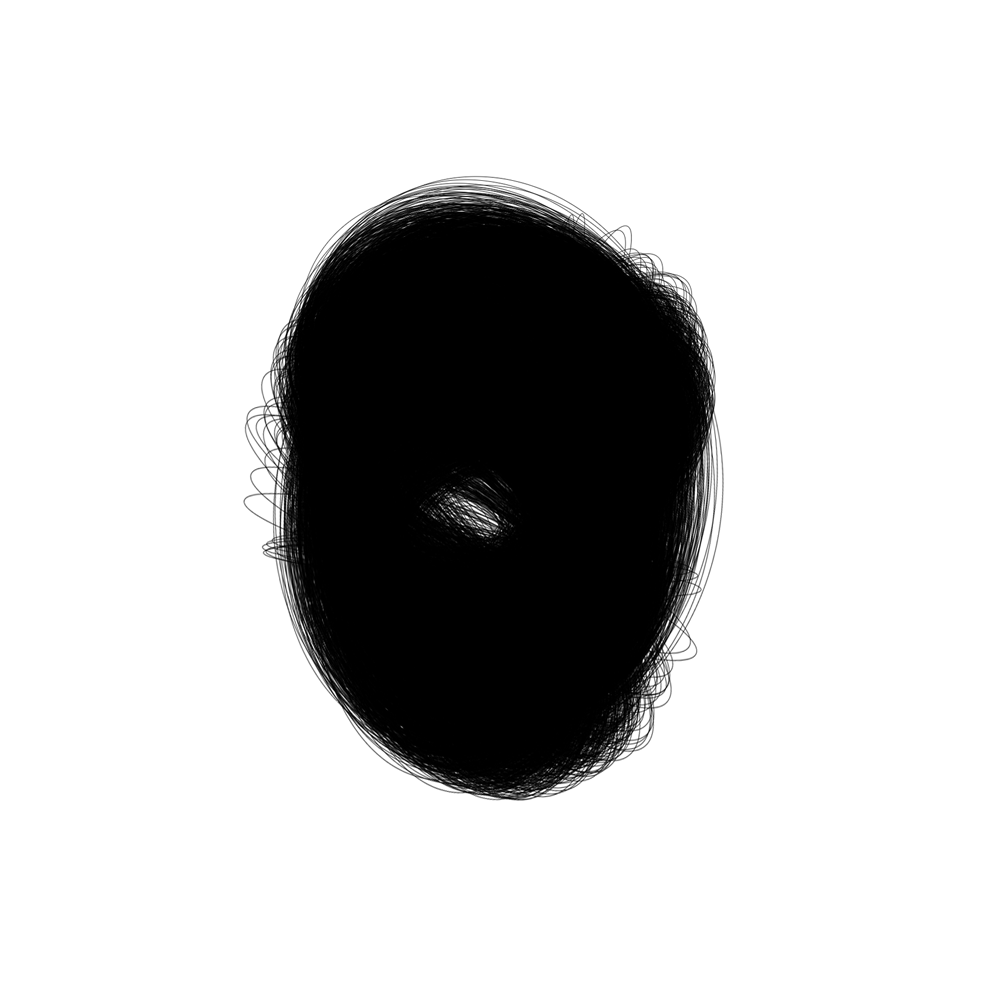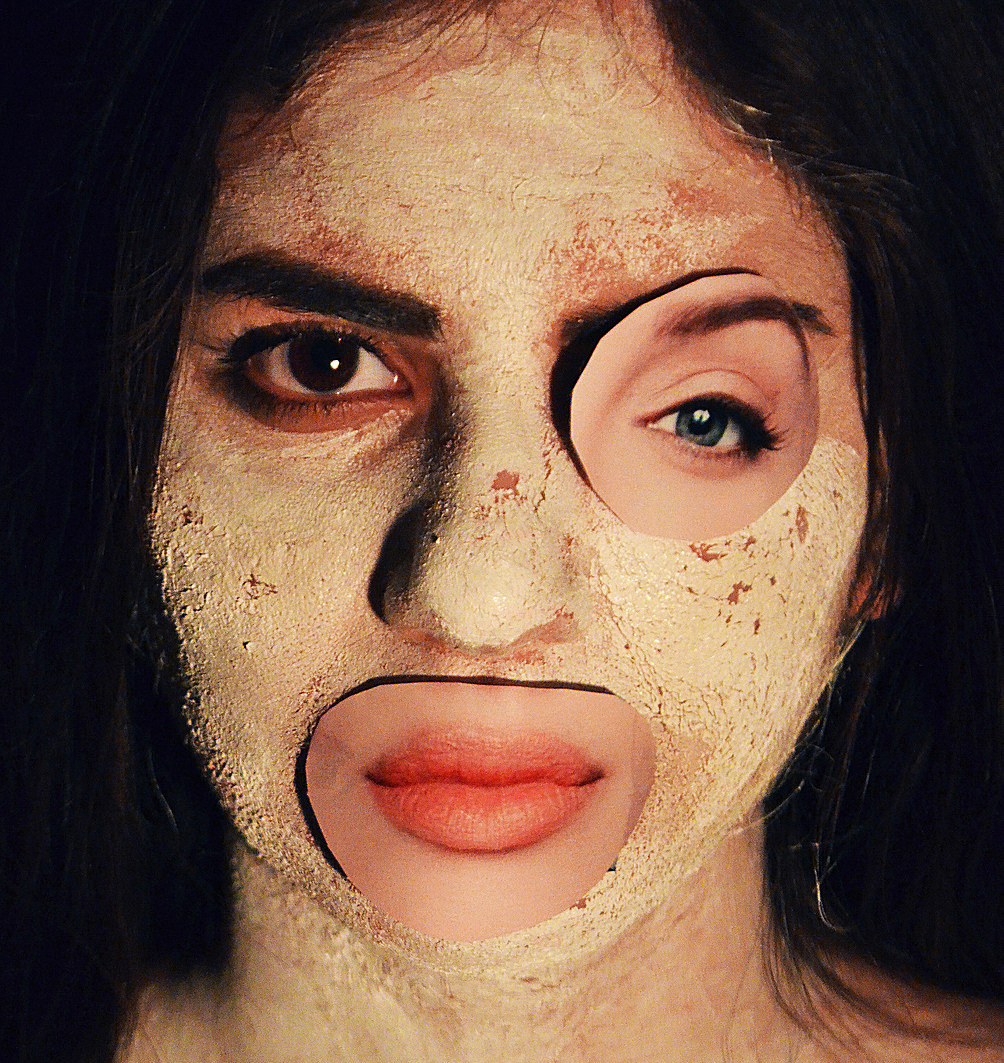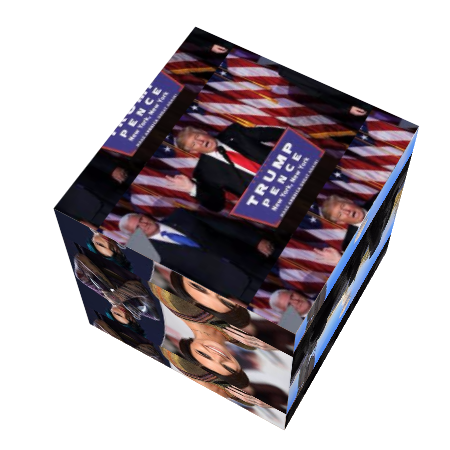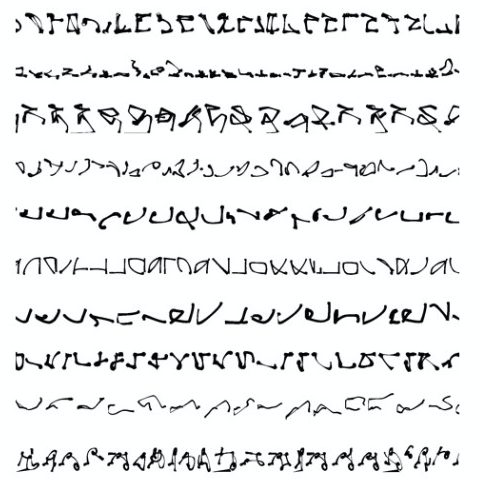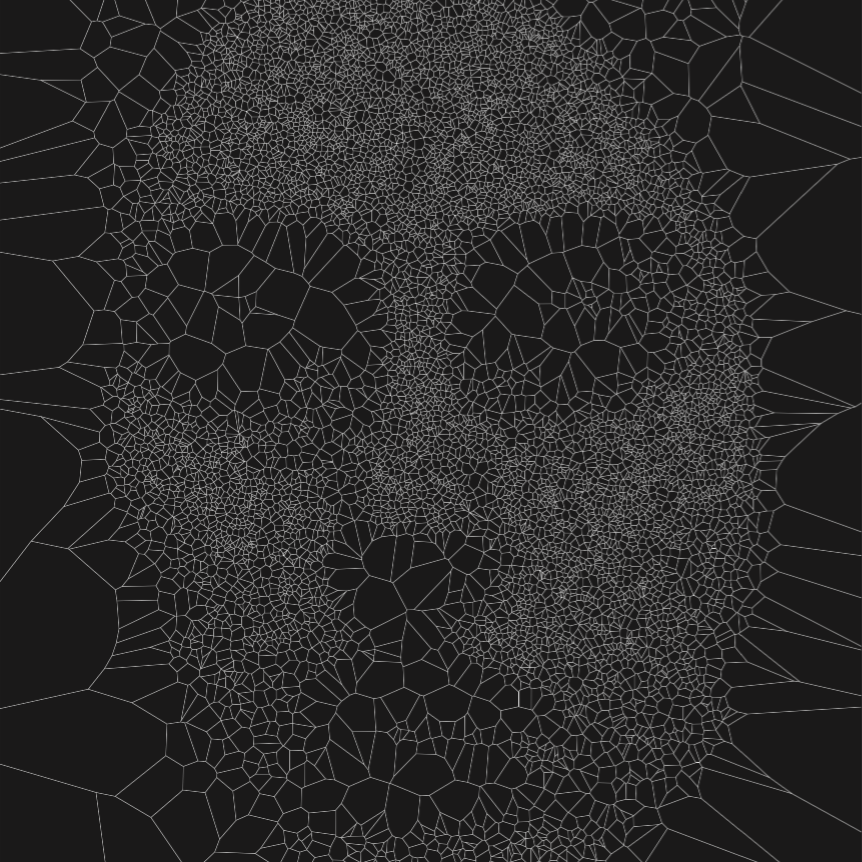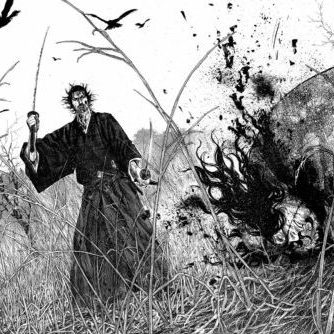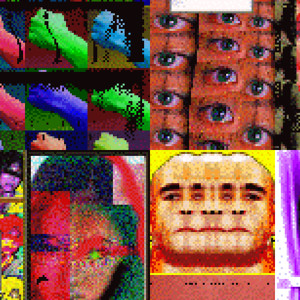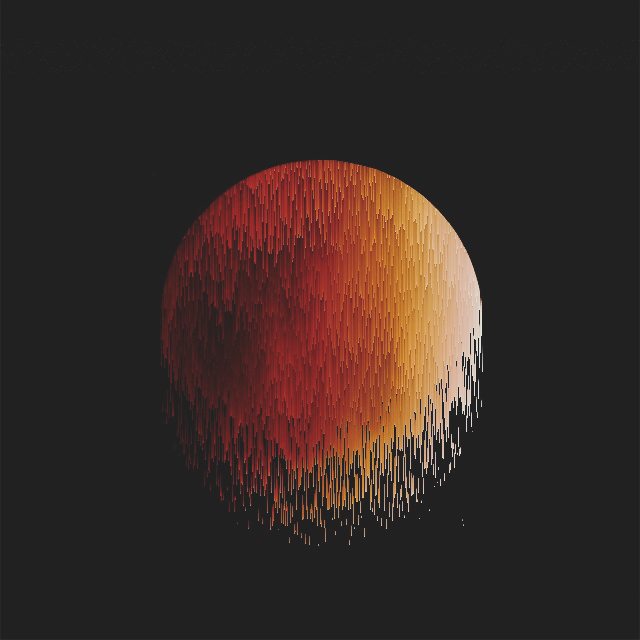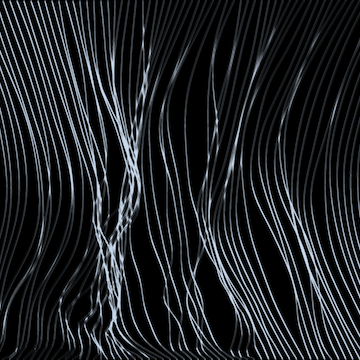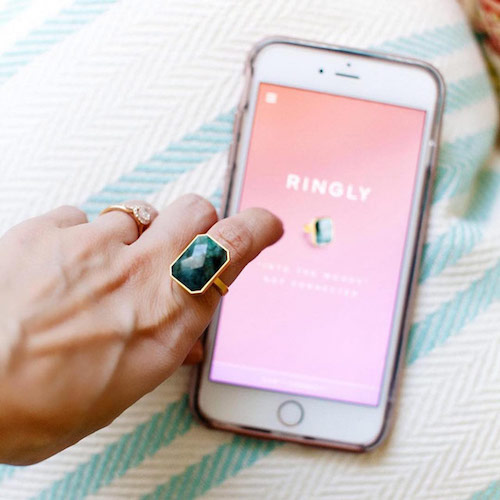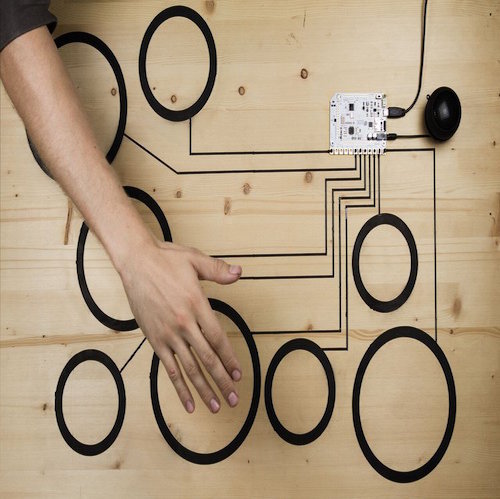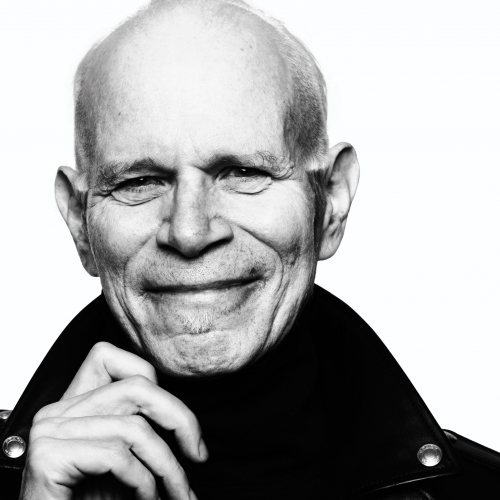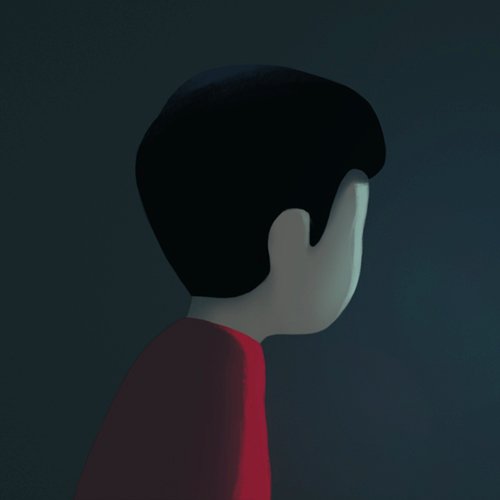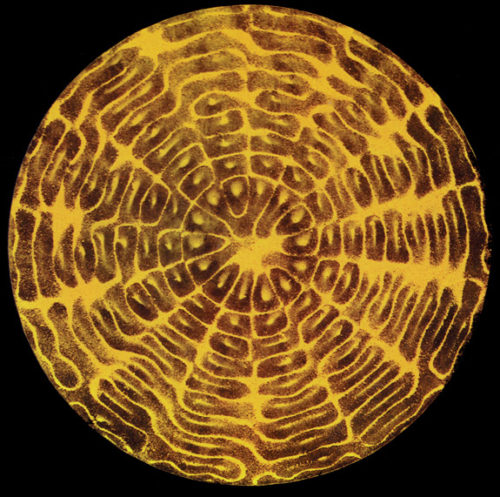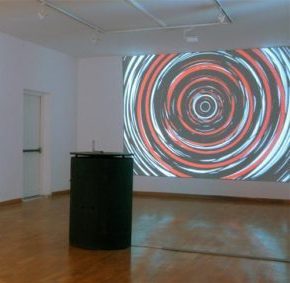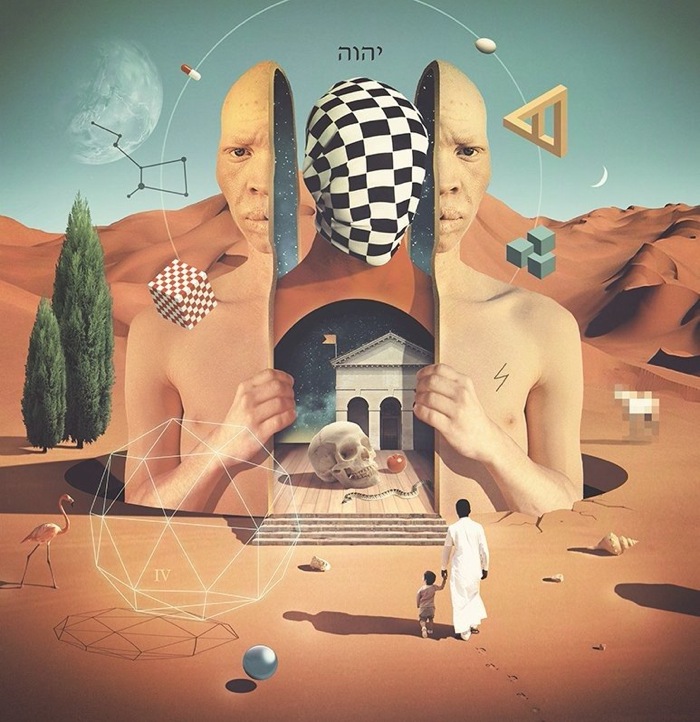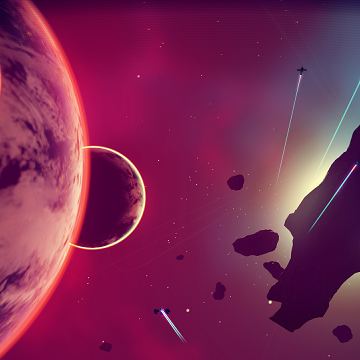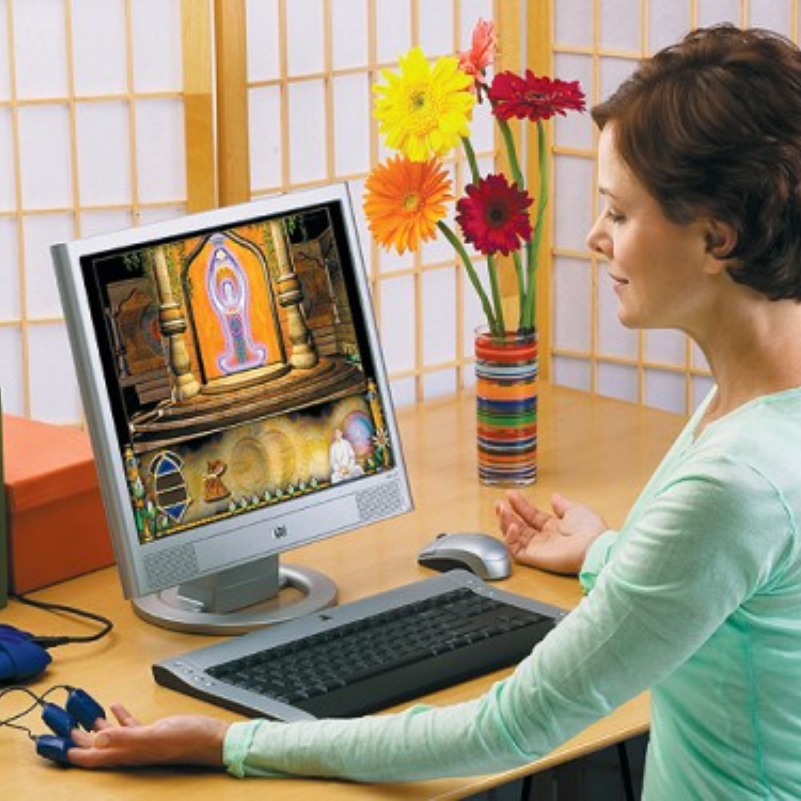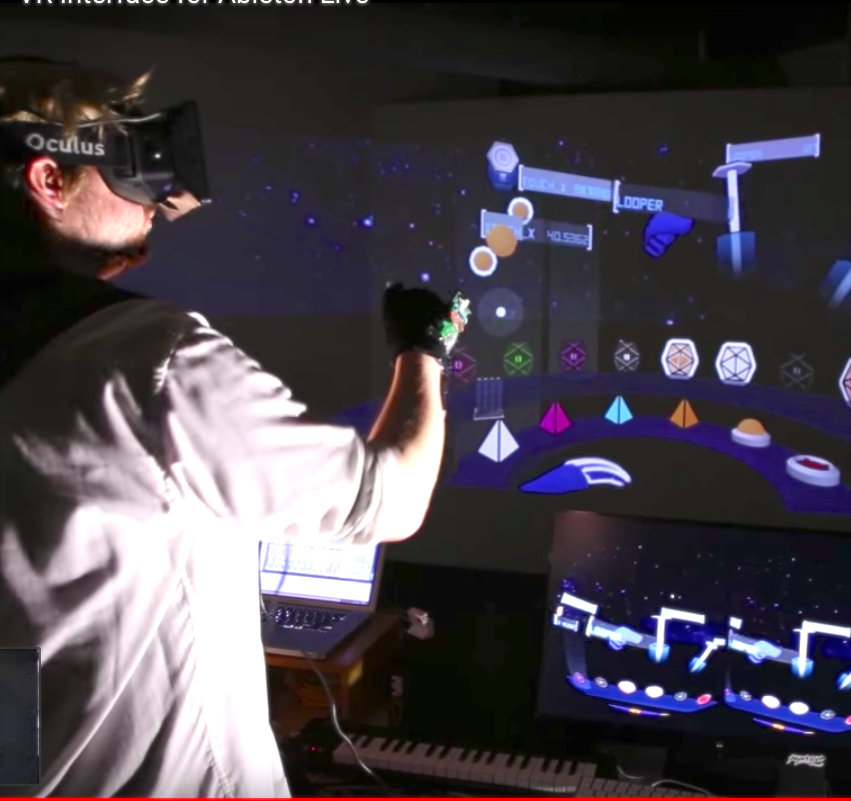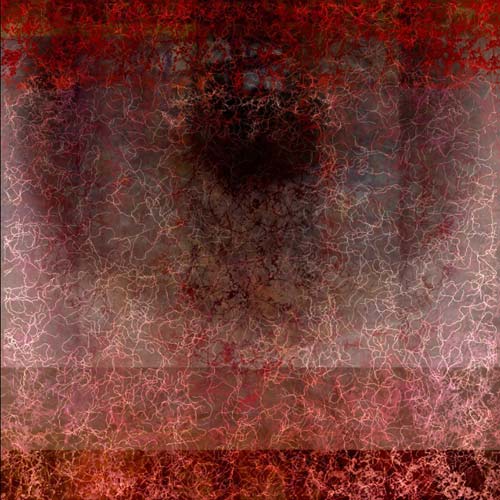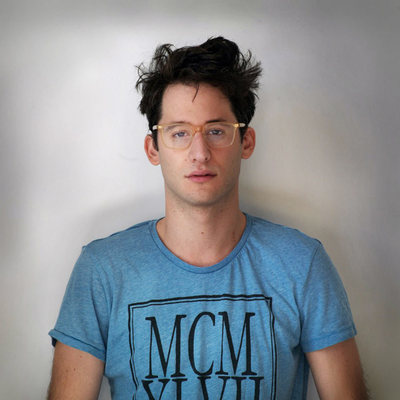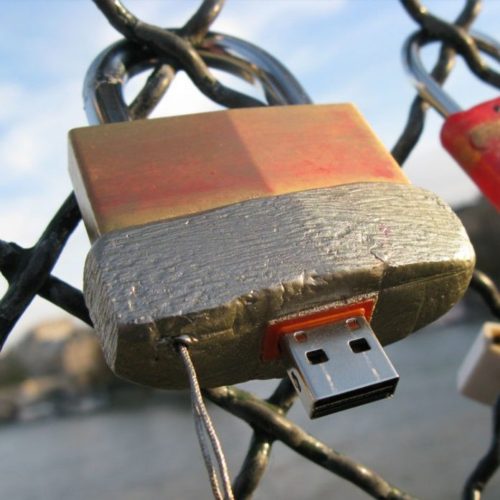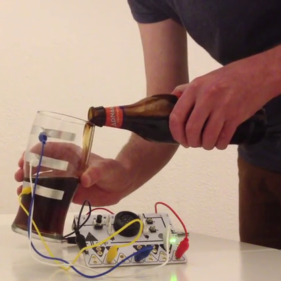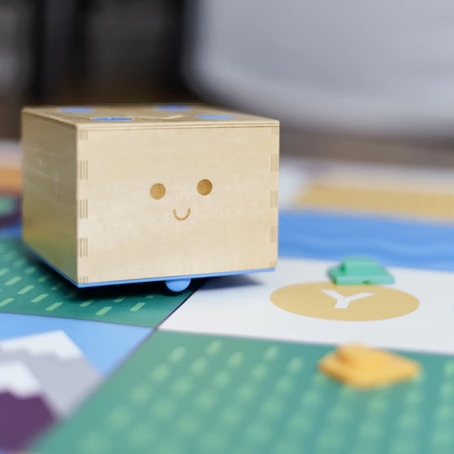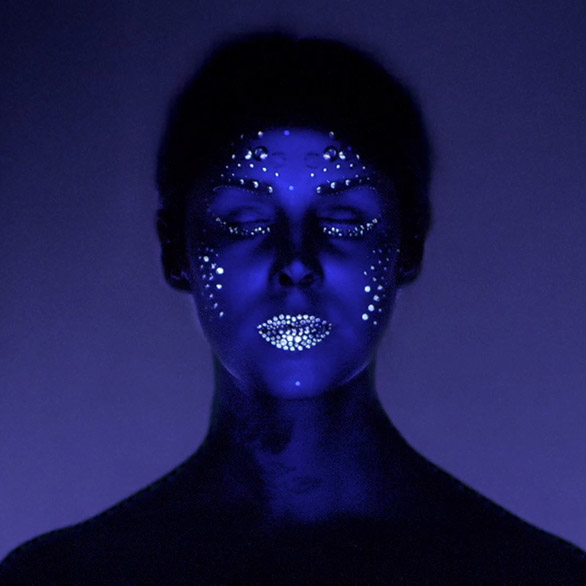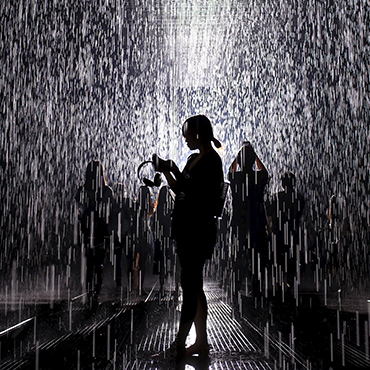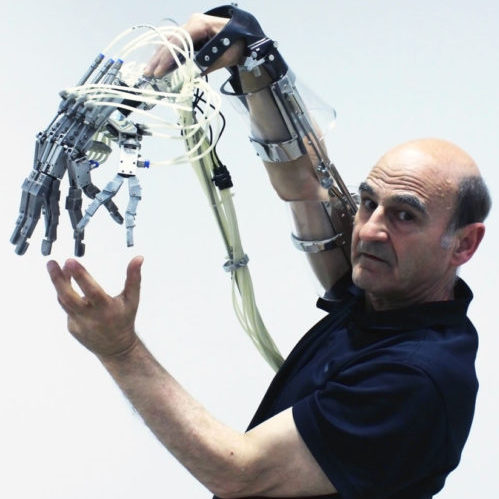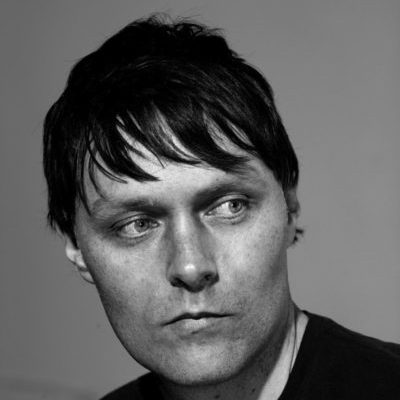Hot Subjects
by Paweł Dziadur
Summary
The installation consisted of a few elements: A CNC mill fabricated Styrofoam relief (180 x 90 x 10 cm) in which the digital 3D object used for the machining was created through C++ code by extruding and reworking a photograph of Hibakusha, a surviving victim of Hiroshima; a Virtual Reality projection combining 360 video footage with synthetic graphics, referencing the production process and the above theme of Hibakusha; a temporary textual wall projection providing a document of a survey conducted in the social space.
The concept
If we can speak of images in the context of the spectacle as concentrated capital (as per thought of G. Debord [1]) then in this piece I was seeking to talk about images in terms their weaponisation and their concentrated and transferred violence.
By playing with a polysemous title of the work, I employed the language as one of its building materials. One of the meanings of the title referred to an appropriated image of the Hibakusha, a surviving victim of Hiroshima. While the installation attempted to put the viewer in the mode of rethinking their relationship to the above context of war and violence, and to the violence of images in the age of internet and the digital media, it also referred auto-ironically to hot subjects employed by art, exposing its commercial attitude and vast realms of vanity. It touched on the powerlessness of spectatorship-based art, the brutality underlining hypercapitalist simulacra and the themes of collective conscience and the desire in the shadow of nuclear fear.
I have never experienced a war or knew it outside the realm of reproduced imagery. However, I used to have the picture of Hibakusha appropriated in the piece as a kid among my toys, a copy from before of the era of the digital reproduction, a frame in an analogue reel of slides used for the Warsaw Pact army training.
It led me to the thoughts how image containing a typical pose of a medical subject could become weaponised: not only it was used as a medical data or could constitute a warning to the forthcoming generations, but on the contrary, it was used for both sides of the potential new conflict to train the military personnel. In a result, the reproduction of the image has worked to increase a chance for the use of nuclear weapons to happen again.
The military doctrine of the Warsaw Pact, dissolved in 1991, was hardly defensive as it involved plans for the first strike on the Western Europe with a combination of nuclear and conventional forces. Nowadays given the international situation the danger of nuclear conflict is conceived to be at least as high as in the cold war period of the 80s and the major nuclear players (including Russia, UK and the US) are all currently planning to budget billions to modernise their nuclear armament.
I should probably highlight that reiteration of these facts is pretty much in line with the vision of the piece, touching the politics but at the same time bringing out the mechanistic nature of the process, following a performed automatism to look on the mainstream reality and appropriate the hot and the popular, regardless of the decorum.
In the UK organisations like Stop the War are advocating for dissolving NATO. However, statistics show that in Poland, where I come from the fear of nuclear attack among population have increased and became an element of collective conscience and emotions. It also became one of the main topics of mainstream media. It is because Warsaw is exercised to be one of the first targets and it can be reached from the proximity of Russian Kaliningrad exclave by nuclear-capable Iskander missiles within minutes. At the same time, the Russian Revised Military Doctrine of 2014 was modified to allow nuclear first strike in a situation of the state regime being under threat [2].
Given this situation, I was interested in developing the potential of the Hot Subjects title and juxtaposing the collective conscience of London population reflected in the performed survey on hot subjects of art, to show the language, textual significance and meaningful interaction at work in a span between trivial, serious, sincere, manipulated and simulated.
Regarding the desire, while piece brought its dark and Freudian concept into the picture and the survey itself referenced the libidinal interpretation of the artistic process, given the model of face to face interaction, pen and paper and beneficial themes of art and communication being put on the table. The aim was to ironically contrast such models of desire with a view on capitalism being a system of automatic governance, automatisms lacking the desiring body [3].
In an initial draft of the piece giving it a more happening and theatrical span the contacts with the marginalised voices have been attempted to possibly tag their live speech against the subjects from the survey. The proposals to involve LGBT community activist from Russia and the patients of a UK mental health ward under the scientific supervision were created however not accepted. In a result the theme of the survey became less pronounced and might lead to another version of the piece in the future. Nevertheless, in a manner of an evolving installation the results of the survey were temporarily displayed as a side projection, creating a juxtaposition to the central thematic elements of the Hibakusha represented by the CNC relief and the Virtual Reality.
Design choices: the relief
The choice of a fragile material such as Styrofoam was supposed to be contrasted with the brutality of the drill. Its raw, unpainted form combined with the fact that the 3 panels represented 3 stages of never finished production of the same digital model were supposed to bring in the viewers to focus on the concept and the processual character rather than on the materiality of art commodity object. Also, by choosing raw colour, surface and character I was trying to follow the advice of non-intervention in the mechanistic process proposed in a Sentences on Conceptual Art by Sol Lewitt: "The process is mechanical and should not be tampered with. It should run its course" [4].
It should be explained that the singular pose of Hibakusha from the original picture was reproduced three times in each panel making them appear horizontally side by side. The appearances arranged in such a way included small differences arising from the long path the digital model went through being reformatted in different 3D programmes until it became the toolpath for the drill, which again could introduce small variations.
Such method of composition was similar to glitch generation where the synchronisation of lines is lost causing duplication of forms and also in how Andy Warhol used to multiplicate and align together slightly differing revisions of his works.
In this context although some aesthetics, perhaps a fashionable glitch one was echoed the main thing was to bring out the violence of the drill which level of extrusion reflected the reversed brightness (darkness) of the image.
The place where the skin of the Hibakusha was most burned was dark in the picture. One of the facts the image is famous for is that the pattern of then burns on the skin reflected a check textured pattern on her clothes, since the dark stripes on the cloth attracted more energy from the nuclear blast.
This brought me to thoughts about a metaphor of violence in the mechanistic repetitions and patterns and functional forms. The visual representation of a check texture could represent the violence embedded in the modes of production itself.
While a blast of a nuclear bomb relates to entropy it can be contrasted with precisely crafted paths of a robotic arm, execution of a precision code in a programming languages like C++ and gcode running on high-end hardware and employing amount of human skills and knowledge. Fabrication building upon multi-layered history of exploitation of an image of tragedy from the past igniting current fears thus can depict entropy and evil as preceded with carefully crafted actions submissive to the realm of automatisms and machines.
The design of the relief was supposed to provoke questions about the origin. An example of a piece which can initiate the discussion about the origin and is based on appropriating images of death and barbarity of modern civilisation can be Hostage video stills (2005) by Seth Price [5]. In this case the reproductions from the ISIS videos were printed on transparent film and rolled, as Price claims, to highlight to inexplicable violence that originated them.
Given an action to appropriate and rework an image or object into a different medium in post-internet art the necessity of origin is often denied [6] and matter can be viewed as a network in constant flux. In my piece however touching on this discourse by reworking a flat picture of a wounded body into a 3D mesh using Open Source coding tools I wanted show the origins of the initial violence which originated the original Hibakusha picture in the previously discussed social submissiveness to systems which are founded on violence even when it is hidden.
The fact that the 3 panels were never finished, were a matter of choices in progress of the production and though improvised reflect the emotions towards the tragedy. The middle panel being a preliminary stage of the CNC fabrication reminded me the facade of a tenement l saw in Berlin - covered with decals from bullets of the WW2 aircrafts.
The compositional quality and the fact that the form was visually pleasing was following the resemblance to the fractal nature and the fact how the latter is related to the Brownian motions.
Finally, it should be said that the composition of the relief and the whole installation was adjusted to the exhibiting corner, given the rule that an art object remains in a dialogue with its spatial surroundings.
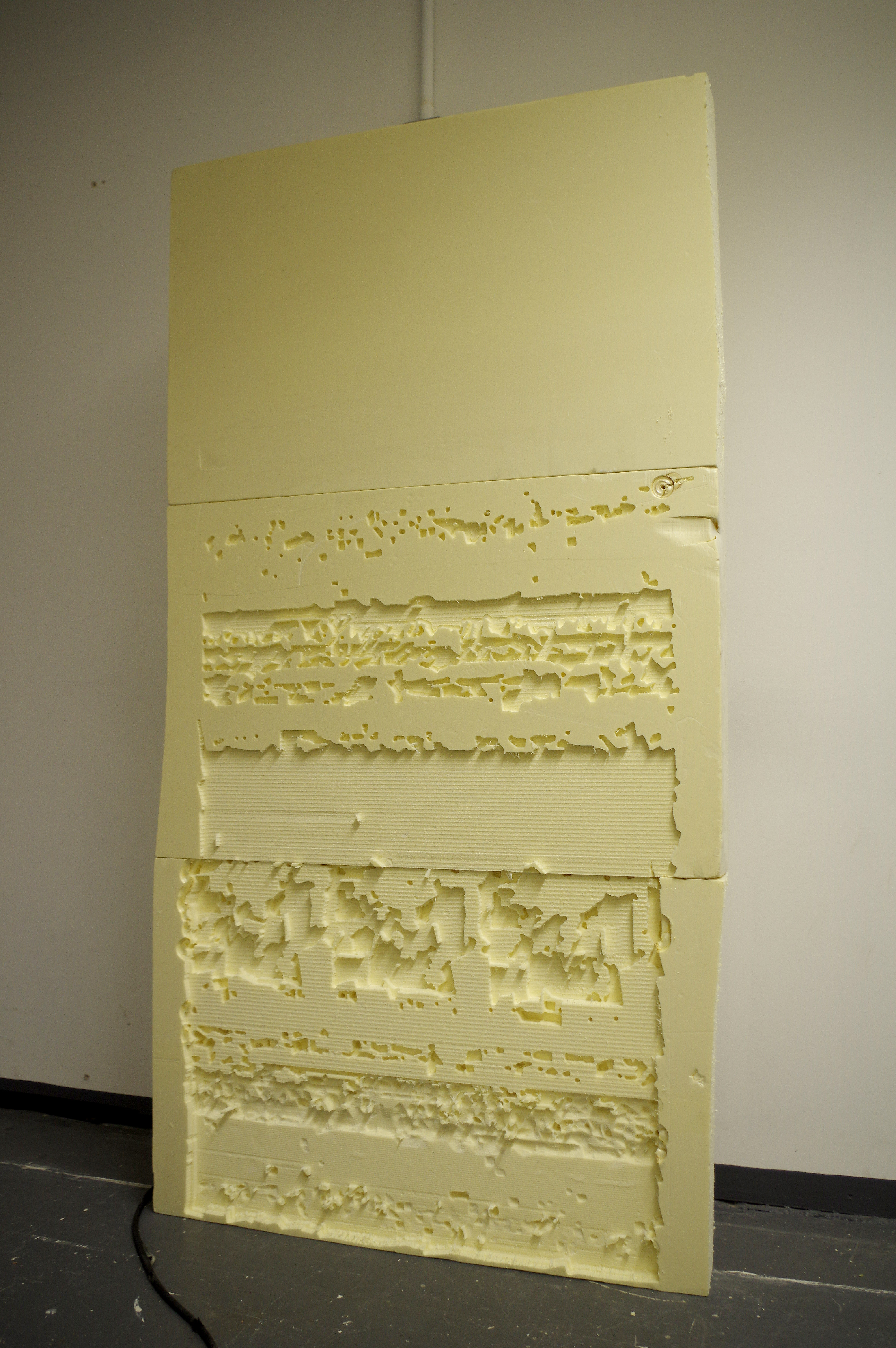

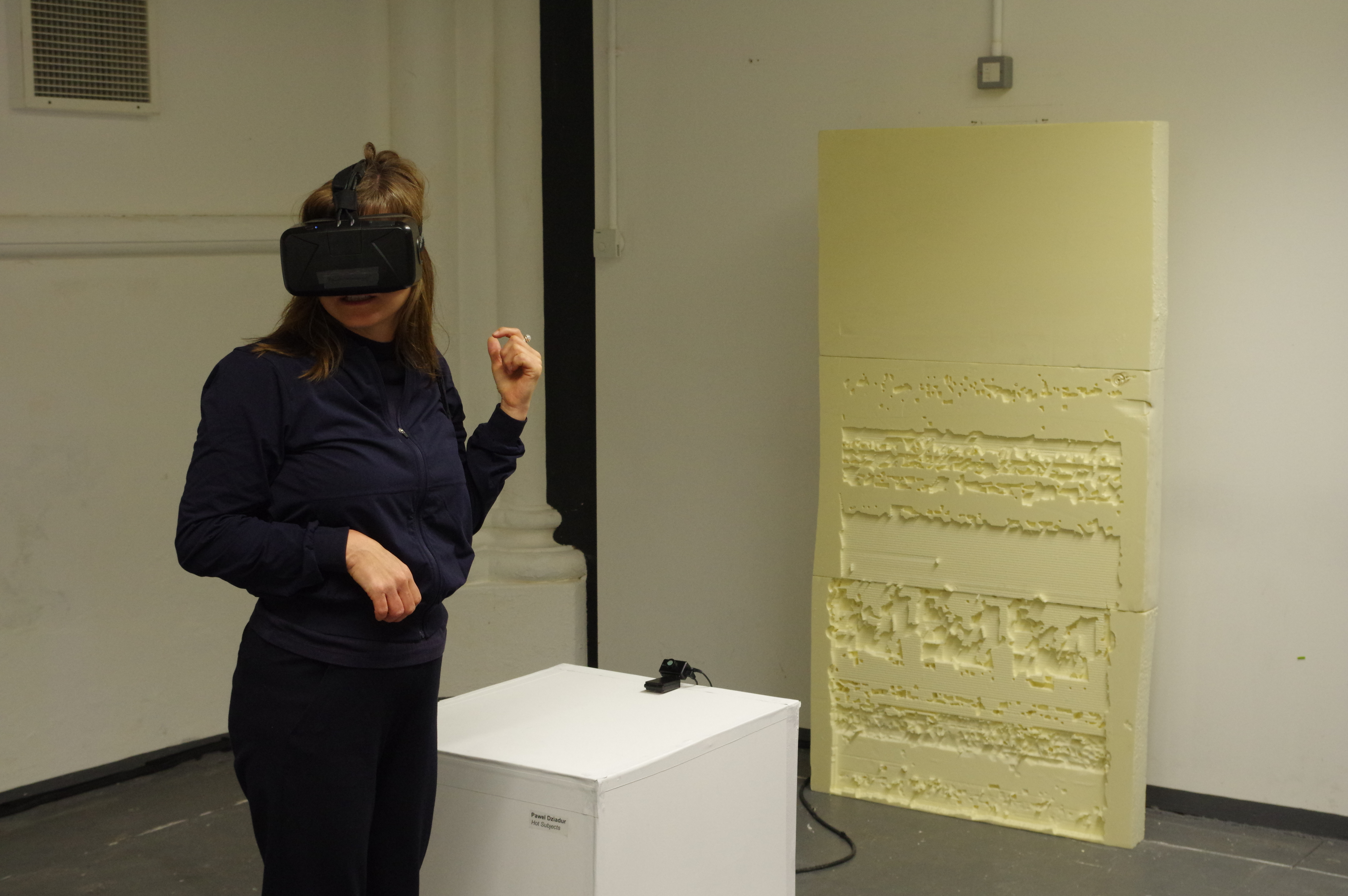

Design choices: the virtual reality and viewer interaction
The choice of the virtual reality projection was employed with a criticality of the medium in the background. Because for some of the viewers the piece could turn into a demonstration of a pseudo-exciting toy made by corporate brand owned by M. Zuckerberg I did not want this part to be very complex or spectacular.
Given the initial three separate VR scenes, I have simplified the piece by leaving just one. This was to make the piece more coherent as particularly the VR sequence was potentially meant to provide a hint for the viewer so that they can realise that the relief was a creation using a rework of the photograph of Hibakusha.
It was achieved in two manners: firstly, after putting on the VR headset the orientation of the VR scene allowed the viewer to see the image being a base for the relief in the virtual space, exactly where the relief was placed in the real space. It was not particularly the original monochrome picture, but rather another artificially colourised version of the same picture of the Hibakusha from the internet. By using a colourised version, I highlighted the fact that my attempt at wider digital manipulation of the image was not historically the first one.
Because the VR scene was showing the process of fabrication of the relief in a workshop, captured using a 360 camera, I stuck the picture on a large wooden board in the virtual space, as discussed just in front of the viewer. Interestingly, some of the audience interpreted it as a painting being hung on the board in the video, probably due to an overly artificial look of the hues in the discussed colourised version.
Secondly, I overlaid a video of an internet browser being another synthetic element on the ceiling in the virtual space. That was a screencast of myself doing a search by the keyword Hibakusha on the Google images, scrolling through for a while and then finding the monochrome version of the Hibakusha file and right clicking to download it. Here again, it was interesting to note that some viewers thought the video was a video projection on the ceiling of the 360 video-captured workshop.
The video included a sinister Google logo alongside the stream of images mixing the bodies of dead and surviving victims with some references to anti-nuclear movement. The choice to present it within the immersion of the VR highlighted the aspects of violence end repression related to the use of technologies and the illusionism of the hypercapitalist simulacra (as per thought of Jean Baudrillard).
I have also exploited a characteristic of the 360 camera optical distortion: when the camera remained close to objects, like in this case a table with a CNC mill fabricating the relief, the objects appeared closer and larger than in reality, which gave the VR a bit of a surreal character – the viewers after turning around in the virtual space could sense they were on top of the table while attacked by a view of an immense robotic arm.
To summarise although simplifying the sequence and providing visible hints only a very small number of viewers could realise the origin of the relief in the Hibakusha picture after experiencing the VR. Although resolving the discussed mystery by the viewer or their direct information or education was not necessarily an initial aim of my work it leads me to consider the possibility of making the space of the hints even wider in another version of the piece and bid on the communicational aspect of the artwork.
Nevertheless the above observation need to be complemented with few facts. Firstly, artworks on the exhibition were assumed to be presented without any written description. In the case of a possibility of providing a description, the above issue of hints would be obsolete. Secondly, there is a question of a flux of the viewers in the exhibiting space and the amount of time they wish to spend with a piece. Given the short time span, not all the viewers tried to explore the VR space a bit, e.g. enough to look at the ceiling or to give the piece a bit of analysis to connect some symbols by themselves.
It was interesting to note that many of the viewers experienced the piece without realising the theme being related to history, politics, violence, pain, horror, alienation, threat and enslavement. Getting them informed was somehow a bit disorienting for them but certainly worth the effort. I believe an experience of a digital art piece which got initially recognised as some form of abstract art or techno-progressive entertainment, with a meaning successively being uncovered might be well remembered afterward, and lead to rethinking the status of such forms of art. In this context, I should say that bringing the piece any close to the discourse of re-negotiating an art object status was certainly in line with my aims.
Process of production: the relief
In the initial stage, I used the provided below the article code in C++ / OpenFrameworks, which I built upon ofMeshFromCamera example. I worked with the pictures of Hibakusha to extrude them into a mesh based on the level of darkness in the image. As explained above I worked to achieve an Andy Warhol style of placing of a few of the similar images side by side. From the code, I was able to save the mesh as a .ply file.
Nevertheless, such .ply mesh needed to go a long and uneasy path before the fabrication. It took a good few days of work and research.
The workflow used to fabricate it from the initial .ply finally involved working with software such as MeshMixer, Netfabb Studio Basic, Instant Meshes (to convert triangular mesh to quad mesh) and Finally Fusion 360 Cam to turn it to BRep, scale and generate the toolpath for the CNC mill.
It is because Fusion 360 Cam accepts "solid body meshes", it needed some thickness, it needed experimenting with polygon count reduction as Fusion 360 handles objects above 10000 faces with difficulty. So although it was tricky, it was good to learn, research and establish this workflow. Mainly that when googled it occurred that most people use Fusion 360 to design inside it (e.g. exploiting the fact that it is mostly using splines instead of faces) and not too many people use Fusion 360 Cam to fabricate artworks using external computationally generated meshes, so finding any information online was difficult.
The experimentally established threshold of circa 10000 faces of a solid body mesh to be converted into BRep and a path for a drill may serve as a word of notice for people who want to use Fusion 360 for similar purposes. The threshold was not very clear and involved the software crashing very often during experimentation even on a relatively efficient workstation. Notably, even though the conversion to BRep succeeded without a crash, given a model above circa 10000 faces, then the toolpath generation took hours as in progress of the generation the levels of memory use were raising over 60 GB and more. And even in a case of a model way below 10000 faces the toolpath generation process can become heavy when scaling the piece up (e.g. to 60×90 cm). The Fusion 360 Cam generated big virtual memory swap files on the hard-drive, and it was uncertain if the software process finishes without error.
It exposed the limitations of the Fusion 360 as naturally, art practice would sometimes demand to work with many more times complex models than 10000 faces which are handled by other 3D software.
In contrast, the previously mentioned Instant Meshes [7] programme accompanying a research paper from the Interactive Geometry Lab, EHT Zurich is worth few words of recommendation. The application can convert between different kinds of meshes ranging millions of faces and "present a novel approach to remesh a surface into an isotropic triangular or quad-dominant mesh using a unified local smoothing operator that optimizes both the edge orientations and vertex positions in the output mesh'' and "produces meshes with high isotropy while naturally aligning and snapping edges to sharp features" [8]. As such it seems to answer requirements of workflows involving digital 3D scanning and fabrication. The authors show it processed a 3D scan of Michelangelo's St. Matthews containing 372 millions triangles.
Nevertheless, given all the possibilities Fusion 360 had to remain in the workflow for tool path generation. The video below shows the simulation of the machining process with a toolpath already created.
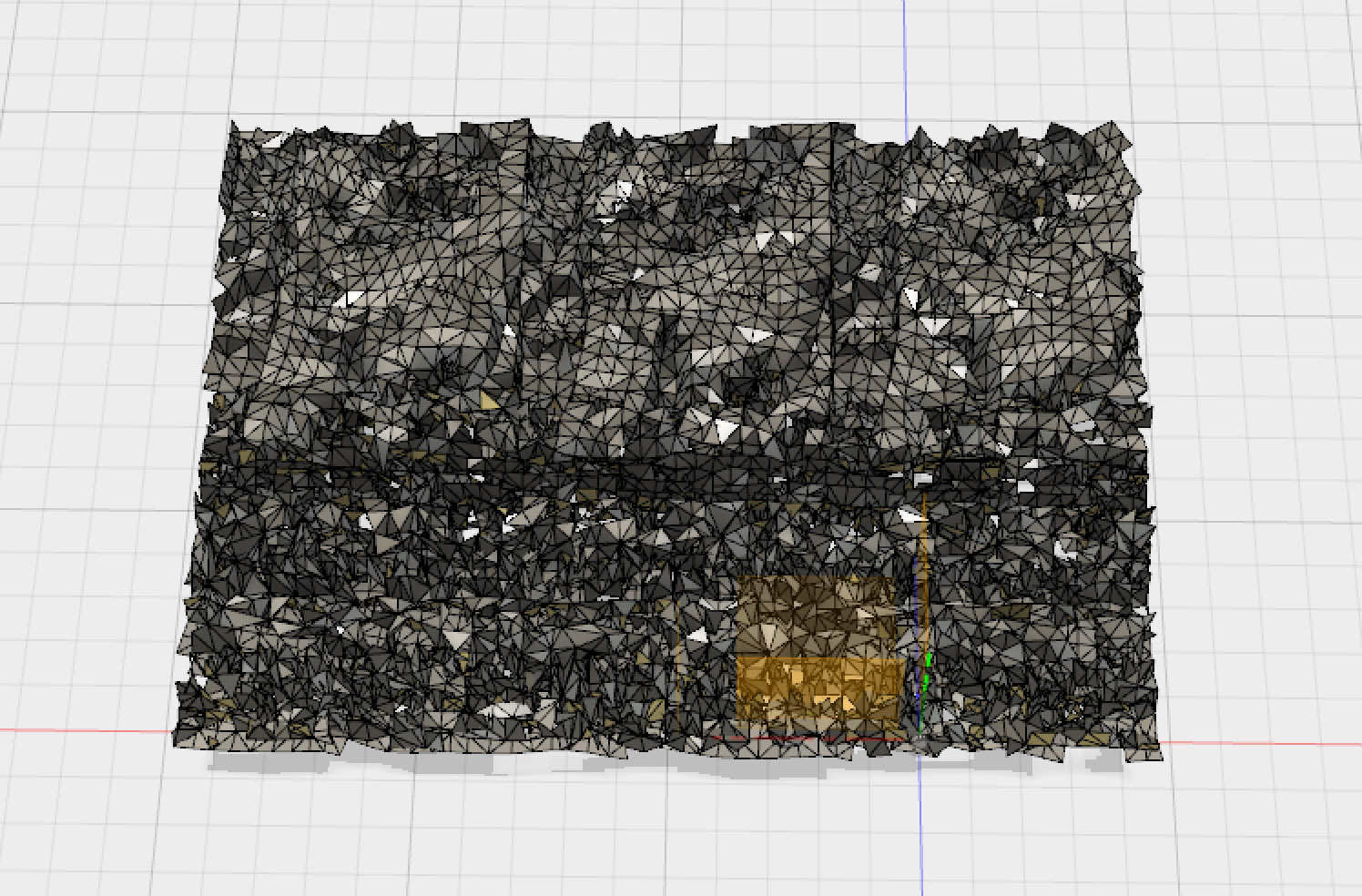

View of the relief formatted in Fusion 360 Cam software
The processes of milling were stopping few times and sometimes it was difficult to resume it. As such the final creative process behind the form of the relief was improvised. However, I was glad with such status as I appreciated the idea of unfinishedness and exposing stages of production of the machined piece, which might have been inspired by David Quayola’s Captives (2014) which in turn had been a contemporary interpretation of Michelangelo’s unfinished series “Prigioni” (1513-1534) and his technique of “non-finito” [9].
Process of production: the VR
I have used 360 camera filming. My Samsung Gear mounted on a monopod camera shot 3840 x 1920 at 30 FPS. Such resolution was not greatest considering that frame needs to necessarily cover all possible directions of viewing, however, given the current state of this technology it was also the highest within the low/mid range of 360 cameras I could access. To go any higher I would need to use a rig of 6-8 GoPros or more expensive 50k price range cameras. Realistic quality of the video was not my aim here. In fact, I appreciated the fact that the 360 video had a character a little between a footage and a computer game.
The raw 360 footage embeds two fisheye hemispheres that combine into a single fish-eye sphere and needs to be stitched. The latter is a name of a process of conversion of the polar to the Cartesian coordinate system and rewriting each frame so that in a result a frame is equivalent to a texture which when overlaid on a sphere geometry in any 3D software will produce an all directions look-around-environment. I have used the Action Director software to do the stitch. Unfortunately, this programme was available only in Windows. An alternative on the MacOS I had access to was Movie 360 Video Stitcher, however, when compared it occurred the Action Director produced better quality results (invisibility of marks edges hemispheres).
Then I produced my VR sequences in the form of a custom C++ / OpenFrameworks application. The ofxOculusDK2 addon provides an API and a template for rendering to both eyes of the VR headset, so essentially any 3D scene can be created as long as it does not run too slow. Because a relatively high-resolution content needs to be rendered separately to both eyes, the VR needs more graphic processing power than an equivalent flat screen 3D animation.
Because of the presumed anti-spectacular character of the piece and also since I did not want the VR to distract the viewers from observing the relief and the whole context of the self-reflection within the space and the significances arising from the lo-fi character of the imagery I decided it will be fine to run the installation VR of a Mac with discrete Nvidia GT 650M video card, instead of a proper VR PC. This also saved the work of porting my code to Windows.
As such the rendering of a sphere textured with 3840 x 1920 video to both eyes in the headset was already a lot for the above graphics processor. Thus given a few synthetic elements added within the virtual space the framerate was oscillating between 45 and 54 FPS. Also, the synthetic internet browser video appended to the ceiling in the virtual space in the form of a video-textured plane was using a little processing power subtracting few FPS. As such, I had to ensure that it wasn’t displayed too large.
It can be explained that adding synthetic elements is not very complex, and can be summarised as displaying 3D objects which are closer to the viewer than the radius of the video sphere (which when expressed in metres, which is a unit in VR graphics produced similar results when set to 100m or 5000m, but could not be too small). Synthetic objects were deepening immersion of the scene since in contrast to the video was initially shot monoscopic were correctly distorted for both eyes.
The lesson learned from running the installation was that a proper cooling needed to be supplied to the computer. So installing inside a closed wasn’t a good idea. Secondly that to ensure the screens don't come back to screen saver it is not enough to set it in the MacOS energy settings, which seem to be unreliable, but to ensure display stability additional software like Caffeine or alternatives [10] is needed.
Finally, my VR production conclusions were that for the next time I use this technology it would be better to run it on a VR PC, since the low-fi effect even though anti-spectacular could be regarded as a little distracting in itself, while there might be more possibilities for the development of the graphics as well as open ways of passing the message given smoother experience (e.g. 75-90 FPS) ensured by an efficient enough graphics processor.
References
[1] Debord, G. (2002) The society of the spectacle pdf
[2] Roderick Gregory, P. (2017). Putin Already Playing Nuclear Poker With Trump Forbes.com.
[3] Bifo Berardi, F. (2013). Accelerationism Questioned from the Point of View of the Body - Journal #46 June 2013 - e-flux.
[4] Lewitt, S. (1968), Sentences on Conceptual Art
[5] Price, S. (2005). Hostage Video Stills. [Road-sign inks screen-printed on polyester film, grommets.] image
[6] Vierkant, A. (2010). The Image Object Post-Internet. 1st ed. pdf
[7] Jakob et al, Instant Field-Aligned Meshes project, Interactive Geometry Lab, ETH Zurich website
[8] Ibidem
[9] David Quayola website
[10] Here are two Caffeine alternatives for keeping your Mac awake article
Sourcecode
Virtual reality sequence: http://pdzia001@gitlab.doc.gold.ac.uk/pdzia001/HotSubjectsVR.git
Computing the relief: http://pdzia001@gitlab.doc.gold.ac.uk/pdzia001/computingTheReleif.git
Working with models: http://pdzia001@gitlab.doc.gold.ac.uk/pdzia001/workingWithModels.git


